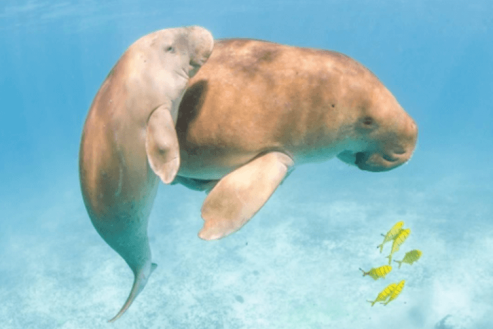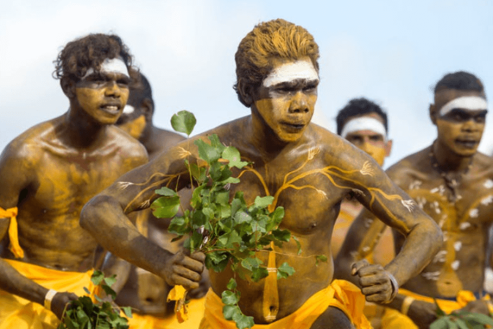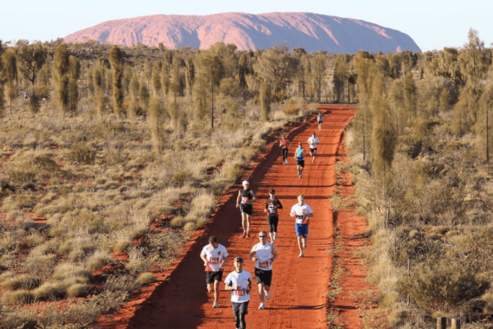Menu
You can manage your membership and billing method by clicking here
Terms of Service
Privacy Policy
Copyright © 2025 Office of Immigration Australia, a private company registered in Australia. All Rights Reserved.

Checking membership status...
 EXCLUSIVE MEMBERS ONLY ACCESS
EXCLUSIVE MEMBERS ONLY ACCESSTo access this month’s edition & Member’s only resources, enter your registered email address.



Exclusive Australian Immigration News, Updates & Opportunities
August 2022
This bulletin is for members only, and provides our members with month to month updates on Australian immigration policy changes and consequential opportunities. Opportunities are found via federal and state government policy shifts for the demand and supply for certain occupations.
This bulletin will keep you up to date so that you do not have to employ expensive immigration lawyers to provide you with monthly research.
August 2022 has landed, and the changes planned presents “exciting” prospects for skilled migration! State governments and Australian employers are both calling for an urgent ramp-up of skilled migrants as a priority! The nationwide staff shortage crisis is driving businesses to the brink and having a devastating impact on the Australian economy. In response, the Albanese government has been discussing both near-term and long-term settings for a ‘Big Australia’ and how to effectively fast-track skilled migration and welcome-in as many new skilled professionals into the system as possible, in order to fix Australia’s skilled worker shortage.
In this month’s ‘Federal News’, the start of the Australian financial year on 1 July 2022 means a resetting of allocations in the Australian migration program, opening up new opportunities for overseas skilled professionals. In this month’s bulletin, we discuss the new program and what the new government may bring.
After federal ministers flagged the necessity to massively ramp-up immigration, Prime Minister Anthony Albanese threw his support behind an increase in Australia’s permanent migrant intake, promising a ‘Big Australia’.
Additionally, the Department of Home Affairs has confirmed it has redirected resources and brought on new staff to address its visa backlog.
In other federal news, Australia has become a majority migrant nation, as newly released census data shows for the first time that more than 50 per cent of residents were born overseas or have an immigrant parent. Last year’s census counted nearly 25.5 million people, including 1 million new residents, revealing the changing face of multicultural Australia.
As of 1st August 2022, the Priority Migration Skilled Occupation List (PMSOL) remains in effect. Visa applications with an occupation on the PMSOL continue to receive priority processing.
In this month’s ‘State News’, worker-hungry state governments have urged Prime minister Anthony Albanese to turbocharge Australia’s skilled migration system, as all states face major labour shortages, creating a national staff-shortage crisis. ‘Business NSW’ said staff shortages were the worst seen in half a century as a recent statewide study found 90 per cent of business owners had unfilled vacancies. The Northern Territory has the highest proportion of businesses reporting vacancies among all the states and territories, according to the Australian Bureau of Statistics.
The State Skilled Migration Programs for Western Australia (WA), Australian Capital Territory (ACT), New South Wales (NSW), Tasmania (TAS) and South Australia (SA) remain open to Offshore Applicants! All other state and territory programs still remain closed (to offshore applicants) due to pandemic restrictions. The Australian Government hopes the influx of new visa holders will help alleviate labour shortages around the country.
In this month’s ‘Economic News’, the wishlist for Australian businesses is to reduce bureaucratic red tape in order to boost migration levels. Senior industry executives have urged the Albanese Government to use its September Jobs Summit to streamline the skilled migration system and allow employers to bring in the necessary skilled professionals. In response, Treasurer Jim Chalmers has acknowledged that skilled labour shortages are a “real hand break on the economy” and “one of the biggest issues we’re dealing with”.
In this month’s ‘Student News’, from 1 July, current and former temporary graduate visa holders who lost time due to COVID-19 travel restrictions can now apply for a replacement visa.
Additionally, if you’re planning of studying in Australia, you can expect faster Australian student visa processing times coming soon, as the newly elected government is working on tackling the growing visa backlog, which has extended to both student and skilled worker visas.
All this and much more in the August issue of The Australian Immigration Bulletin! Let’s take a deeper look at what has happened so far and what is planned for the remainder of August 2022 in Australian Immigration, so that you can start planning!
As legislation and travel requirements are constantly changing, we strongly recommend obtaining advice on your individual situation from a Registered Migration Agent.
Please click here to book a consultation with one of our Registered Australian Migration Agents, located in Australia.

Australia’s 2022-23 Migration Program has been carefully designed to boost the social and economic outcomes that meet Australia’s needs. In fact, the migration programme was first launched in 1945 following the aftermath of World War 2. Given this long history, it is worth understanding how it works. The Australian Immigration Bulletin exists to help explain this in more detail.
As we’ve entered the 8th month of the year, join us for a look at the latest news and developments in the world of Australian Immigration!
We asked those who have established themselves with skilled jobs to share their experience and tips for a career in Australia.

We spoke with Jessica, a skilled migrant working in her own business as a Marketing Specialist.
In which professions have you found employment within Australia?
Hospitality
Marketing
What were some of the biggest challenges after moving to Australia?
Not being able to express myself and understand other people clearly due to my low-level of English skills.
What do you wish you had known before the application process and interview?
This is much simpler than people talk about. There are no “monsters” in the interviews and we don’t need to be afraid of failing. The most important thing is to be yourself, and try not to fit into someone else’s shoes.
What advice would you give to others moving to Australia?
Don’t procrastinate on the job search and application. We used to tell ourselves: “I am not ready yet” or “I need to prepare a little bit more before applying” or “They will never accept my application; I won’t waste my time”. But the truth is that we will never be 100% ready. My advice is:
Start now.
Start where you are.
Start with pain.
Start with doubt.
Start with hands shaking.
Start with voice trembling. But start!
Start and don’t stop.
Start where you are, with what you have. Just start.

The start of the financial year on 1 July 2022 means a resetting of allocations in Australia’s migration program, opening up new opportunities for skilled workers from overseas. But this year also presents some key changes for certain visa holders in response to the COVID-19 pandemic.
Visa changes from 1 July will offer skilled workers more opportunity for permanent residency, and the chance for graduates impacted by COVID-19 border closures to make up for their time locked out of Australia.
These changes present “exciting” prospects, with a focus on supporting the economic recovery from COVID-19. It is very difficult for a lot of people and a lot of industries to fill staff shortages, especially in certain skilled fields.
This will effectively welcome-in as many new people into the system as possible.
Here are some of the key changes:
What will be the new government’s approach?
1 July also marks the resetting of places in the migration program, presenting new opportunities for migrants.
The migration opportunities for skilled workers to enter Australia are about to rise.
The Labor party has outlined an intention to push for a renewed focus on permanent residency, to combat insecurity posed by rising levels of temporary migration.
But the new government, elected in May, has inherited a migration program still grappling with the impacts of the pandemic, and has said addressing visa backlogs is its priority.
Decisions made by its predecessors regarding the visa framework will continue, with some having real implications for those impacted.
From 1 July, current and former temporary graduate visa holders who lost time due to COVID-19 travel restrictions can also apply for a replacement visa.
To be eligible, people must hold a valid temporary graduate visa, or have previously held a temporary graduate visa that expired on or after 1 February, 2020.
They’ll also have to have been outside of Australia between 1 February 2020 and 15 December 2021.
The measure was announced expecting that it will benefit approximately 30,000 current or former Temporary Graduate visa holders.
Because of the education experience of these graduates, they had the potential to quickly offer a positive contribution to the workforce.
We’ve got a big cohort of people with really great skills, with really great Australian education, that never had a chance to stay on and spend the time on their graduate visa here.
A spokesperson for the Department of Home Affairs said: “this replacement stream remedies the situation for those who missed out on their TGV stay period due to COVID-19.”
Typically, applicants are limited to just one initial subclass 485 visa, and a further visa is only available on the basis of regional work and study.

Australia has become a majority migrant nation, as newly released census data shows for the first time more than 50 per cent of residents were born overseas or have an immigrant parent.
Last year’s census counted nearly 25.5 million people, including 1 million new residents.
Results of the 2021 census, taken on August 10, were made public for the first time on Tuesday 12th July, revealing the changing face of multicultural Australia.
About 5.5 million Australians – more than one in five – speak a language other than English at home, up by 800,000 since 2016. Among the total, about 850,000 reported not speaking English well or at all.
Mandarin remains the most common language other than English in Australian homes, spoken by 685,274 in 2021. Arabic was the second most common, while Punjabi has increased by more than 80 per cent since 2016.
Among the country’s more than 5.5 million couple families, 53 per cent reported having children living at home. Since 1996, the proportion of families without children living with them has increased to 47 per cent from 40.8 per.
More than 1 million single-parent families were recorded for the first time last year, while about 2.5 million families have children under the age of 15.
Nearly 25.5 million people were in Australia, excluding overseas visitors, on census night, said Australian Statistician David Gruen. The figure was up by more than 2 million people, or 8.6 per cent, since 2016.
More than 1 million residents arrived in Australia between 2017 and 2021, with four out of every five settling before the COVID-19 pandemic led to the closure of international borders.
“This accurate and valuable data reveals who we are as a nation and how we have changed,” Dr Gruen said.
“Census data is used to inform important decisions about transport, schools, healthcare, infrastructure and business at the community and national level.
“The high response rate means that census data provides accurate insights to tell our community’s story.”

After Labor ministers flag to massively ramp-up immigration, Prime Minister Anthony Albanese threw his support behind an increase in Australia’s permanent migrant intake.
Anthony Albanese has addressed the issues of migration and visa backlogs in relation to skills shortages, saying Australia needs to create better pathways for workers to have a permanent presence in the country.
The Labor government had inherited a “massive” backlog in visas, the prime minister told reporters.
“It is absurd at a time of skills shortages, there have people who have been waiting for such a long period of time,” he said.
“We do have skills shortages that will always need to be filled by migration”.
Mr Albanese said temporary migration would continue to play a role, but also indicated the possibility of more long-term or permanent options.
“One of the things that we can consider, that I’ve spoken about, is — how is (it) that for some particular professions, that have been short of supply for such a long period of time, we continue to rely on temporary migration rather than more permanent forms?”
He said allowing more permanent forms would make a “significant difference”.
“We have a global labour market, we need to acknowledge that,” he said.
“And we need to make sure that we have better pathways as well to a permanent presence in Australia for people to give us the skills that they need.”

Crossbenchers have urged the government to fast-track migration as well as measures to make it easier for women to re-enter the workforce, as a means of tackling Australia’s skills crisis.
Independent MPs Zoe Daniel, Zali Steggall, Dai Le, Helen Haines, Rebekha Sharkie and Kylea Tink have all expressed an interest in attending Labor’s jobs summit in September while others including Andrew Wilkie, Dr Sophie Scamps and Greens leader Adam Bandt said the parliamentary crossbench should be represented.
Employers have called for an increase in skilled migration, and making temporary skilled migration more accessible and responsive to employer needs.
Ms Tink and Dr Scamps supported these calls to fast track skilled migration as a fix to Australia’s worker shortage.
Ms Daniel wants to see pensioners more easily return to the workforce as well as increased skilled migration. But she added that women of the “sandwiched generation”, who look after both children and elderly parents, needed more childcare support so they could work as much as they wanted.
“Childcare needs to be universal, but also flexible. So many women are working in the gig economy, or very tightly rostered environments where they’re only getting a few hours a day and potentially having to pay for a whole day of childcare,” Ms Daniel said.

The Department of Home Affairs has confirmed it has redirected resources and brought on new staff to address its visa backlog, as concerns persist over the impact on applicants and businesses. Here’s what we know so far about the plan.
Australia’s visa backlog is exacerbating processing delays and prompted the new Labor government to name the problem as a priority to be fixed since coming to power.
The Department of Home Affairs has confirmed it has redirected resources and brought on more staff to address the challenge, but concerns remain that the gridlock won’t be easily overcome and will still take time to resolve.
The visa backlog is a lasting impact of the COVID-19 pandemic after resources within the Department of Home Affairs were directed towards enforcing Australia’s international border closure and the administrative burden of travel exemptions.
It means that despite the border reopening to visa holders last December, businesses are still waiting months to bring in staff to fill skill shortages, while applicants continue to face delays on their applications to come to Australia.
Prime Minister Anthony Albanese used his first meeting of National Cabinet with state and territory leaders last month to announce his government’s response.
“We have put people from other duties into trying to clear the visa backlog that clearly is something that’s required,” he said on 17 June 2022.
A Department of Home Affairs spokesperson has since confirmed its intention to reduce visa processing times.
“This will involve sustained effort over coming months to reduce on-hand pipelines of visa applications,” they said.
The department has described the response as developing a so-called “surge capacity” comprising staff from across the department and Australian Border Force.
The spokesperson said this was expected to further boost its visa processing capability to reduce the number of on-hand applications.
“In addition, officers previously focused on the processing of travel exemptions associated with Australia’s border restrictions have now been redirected,” they said.
The spokesperson also said over the past six months it’s recruited new officers focused on visa processing.
“These officers have recently commenced and the Department’s recruitment efforts are continuing at scale,” the spokesperson said.

Worker-hungry state governments have urged Anthony Albanese and Jim Chalmers to turbocharge Australia’s skilled migration system.
After employers called for an urgent ramp-up of skilled migration in the October budget, jurisdictions facing major labour shortages including NSW, Victoria and the Northern Territory have told the government a targeted approach must be achieved to speed up entry for badly needed workers.
Stunning June jobs data released last week showed unemployment fell to a fresh 48-year low of 3.5 per cent in June, as 88,400 people found work.
Industries including construction, hospitality, administration and utilities are reporting major vacancies in the tight labour market, coming as 480,100 jobs sat vacant in May, an increase of 13.8 per cent from February.
The challenge is most acute in Western Australia, where there are 13,200 more vacancies than jobless people and the participation rate is the second highest in the country. Victoria and the nation’s two territories also have more vacancies than unemployed.
NSW Treasurer Matt Kean said the latest labour force figures showed a record low unemployment rate in his state and more workers were badly needed.
“We know industry and businesses are calling for more to be done to address labour shortages across the country,” Mr Kean said.
“We will be asking the federal government to take a targeted and consultative approach to skilled migration intakes. Each state will know their specific requirements and areas that need to be addressed.
“We need to boost skills and migration after thousands of applications were left sitting in an in-tray, putting our recovery at risk. We welcome the action the federal government has taken to date and believe there’s more that can be done to boost skilled migration to get more workers here faster.
“With national leadership, we can build greater participation in the workforce, and make work fairer and more secure.”
Acting Northern Territory Chief Minister Nicole Manison said the national summit, locked in for September 1 and 2 at Parliament House in Canberra, had the opportunity to create a gear shift for state and territory economies.
The NT has the highest proportion of businesses reporting vacancies among all the states and territories, according to the Australian Bureau of Statistics.
“The territory Labor government’s number one priority is jobs for territorians, but we know access to, and retention of, a suitably skilled workforce is a key issue for many employers,” she said.
“Businesses are open, but plenty are still hurting from the impact of COVID. The jobs summit will be vital in shaping the next course Australia and the Territory take.”
The prime minister and treasurer announced the jobs and skills summit to drive reforms in participation, productivity, migration and women’s economic security.
Dr Chalmers said the timing of the summit – which will involve about 100 business and union leaders, state governments and community groups – before his first budget in October was no accident and the government was looking for some quick wins.
Chamber of Commerce and Industry chief executive Andrew McKellar said Australia desperately needed more workers. “There are long-term solutions that should be identified, but quick fixes are also critical,” he said.
Employers are calling for an urgent ramp-up of skilled migrants as a priority.

Business NSW said staff shortages were the worst seen in half a century.
A recent statewide study found 90 per cent of more than 600 surveyed business owners had unfilled vacancies.
Regional manager Jane Laverty said the situation was even more severe in the Northern Rivers, where many businesses were struggling to continue to operate.
“It’s having a devastating impact on our businesses,” she said.
“It’s not just skilled people — it’s also the entry-level position that they’re finding hard to fill, and that really concerns me.
“[The NSW government has] been throwing money at fee-free training — everything they can to provide people with the skills they need to take the job.
“What we’re finding is they’re not getting the applications for the roles.”
Ms Laverty said business operators were running themselves and their staff ragged.
“They’re closing their businesses for one, two and three days in the week just to ensure they can look after the staff that they do have, and also look after themselves,” she said.
Cherry Street Sports Club general manager Tere Sheehan said he could employ as many as 12 new staff tomorrow if the applicants were there.
The group, which operates bowling clubs in Ballina and Lennox Head, said the 90-strong team was at risk of burning out after months of being understaffed.

In view of the global pandemic, the Australian government during 2020 and 2021 imposed some temporary travel restrictions. Now various states of Australia have started issuing invitations and nominating the candidates for skilled migration.
Australia has a point-based system for skilled migration. The Australian State and Territory government programs have two ‘point-tested categories’, being;
The ‘Skilled Nominated- Subclass 190’ is a points-tested permanent category for skilled workers who are nominated by an Australian State or Territory government. The ‘Skilled Nominated- Subclass 190’ enables skilled workers and their families to live, work and/or study in Australia indefinitely with full work rights. You would generally be expected to reside for 2 years in the State or Territory which nominated you.
The ‘Skilled Work Regional (Provisional)- Subclass 491’ is a points-tested temporary category for skilled workers who are nominated by an Australian State or Territory government. The ‘Skilled Work Regional (Provisional)- subclass 491’ enables skilled workers and their families to live, work and/or study in regional areas of Australia for up to five years. This nomination then provides pathways to permanent residency after three years. For migration purposes, most locations of Australia outside of major cities (Sydney, Melbourne, Brisbane, Perth, etc.) are classed as regional areas.
Key requirements for an Australian State or Territory Government immigration nomination:
To apply for either of these nominations, ‘Skilled Nominated- Subclass 190’ or
‘Skilled Work Regional (Provisional)- Subclass 491’, you will still need to lodge an Expression of Interest (EOI).
When deciding whether to nominate an applicant, state or territory nominating agencies refer to their own criteria, which vary from state to state. As a starting point, all applicants must show they have an occupation on the relevant state or territory occupation list, and that they have a genuine intention to reside in that state or territory.
State and territory agencies offer a number of different ‘streams’ and generally cater to offshore skilled applicants, onshore skilled applicants, and recent tertiary graduates. Some states also provide options for small business owners, or applicants with family living in the state or territory.
Please note, the below is information on general requirements and does not take into account any of your personal circumstances. You must check the State/Territory information carefully to ensure you can meet all the requirements for nomination.

People residing overseas are now eligible to be considered for Western Australia (WA) State nomination. Invitations to apply for WA State nomination will be via the ranking system.
The Western Australia government has invited applications from offshore migrants under the following nomination streams:
With world-class education, healthy job opportunities and strong public health management, WA is a safe place to live, work and study.

The ACT Critical Skills List identifies the occupations in current demand in the ACT. This List is important if you want to apply for ACT nomination for either a:
The ACT Government will update this list every four months to make sure that the ACT Skilled Migration Program adapts and responds to the evolving critical skills needs of the ACT economy.
The Canberra Matrix is weighted to ensure that applicants who will make a positive economic contribution to the Territory and/or have demonstrated a genuine commitment to the ACT are more likely to be ranked and invited to apply for ACT nomination.
*ACT nomination does not guarantee a migration outcome. You must still meet the Department of Home Affairs criteria.

To manage South Australia’s COVID recovery response, applicants currently residing offshore are still able to apply.
Depending on your occupation and situation, there are two state nomination options available for skilled migrants through South Australia.
For South Australian state nomination, prospective applicants must meet the Department of Home Affairs requirements, state-specific occupation requirements and have skills in an occupation that is available on the South Australian Skilled Occupation List. Offshore applicants meeting the minimum published requirements can now lodge a Registration of Interest (ROI).

Changes to nomination requirements:
Only minimal changes have been made to nomination requirements for the Tasmanian 2022-23 program year. A summary of this information is below:
The two state nomination options available for skilled migrants through Tasmania are:
The Tasmanian State Nomination Skilled Migration Program supports Tasmanian businesses and increases the state’s working age population. It does this by attracting and retaining migrants with skills genuinely in need by employers, or with the capacity to settle in Tasmania through skilled employment in the long-term, and business activities that will increase employment opportunities.
Due to the effects of Covid-19, Migration Tasmania’s current nomination priorities continue to be:
Tasmania’s skilled migration program is for people wanting to move to the state who have skills that Tasmania need. Skilled migrants are attracted to Tasmania because of the state’s enviable lifestyle, career opportunities, affordable housing, reputable schools and a globally recognised university.

The New South Wales government has invited applications from offshore migrants under the following nomination streams:
The NSW State Government announced that offshore applicants skilled in certain ANZSCO unit groups are still eligible for NSW nomination.
Offshore candidates criteria:
If you are residing offshore, you must:
*Please note: Invitation rounds occur throughout the financial year.
Some of these identified ANZSCO unit groups include: engineering managers, health and welfare service managers, production managers, primary and secondary school teachers, pharmacists, dental practitioners, midwives, registered nurses, social workers, chefs, cooks, and other professions on the Priority Migration Skilled Occupation List (PMSOL).

Program Status Update
The Queensland Skilled Migration Program is currently open but due to current Covid-19 restrictions this is still currently available to onshore applicants only. A review will be made at a later date to open the program for skilled workers living offshore.
For the Skilled Migration Program, Migration Queensland will currently only accept “decision-ready” applications (onshore applicants only).
The Australian Migration Bulletin will continue to update you regarding the Queensland State nomination migration program for offshore applications over the next monthly bulletins.

Program Status Update
The 2022-23 migration program is well underway and the Northern Territory remains open for new onshore nomination applications. Offshore applications remain currently closed due to Covid-19 restrictions.
The Australian Migration Bulletin will continue to update you regarding the Northern Territory nomination migration program for offshore applications over the next monthly bulletins.

Program Status Update
The 2022-23 Victoria migration program remains open for onshore nomination applications. Offshore applications remain currently closed due to Covid-19 restrictions.
The Australian Migration Bulletin will continue to update you regarding the Victoria nomination migration program for offshore applications over the next monthly bulletins.

The Priority Migration Skilled Occupation List (PMSOL) identifies 44 occupations which fill critical skills needs to support Australia’s economic recovery from COVID-19. The list is based on expert advice from the National Skills Commission and consultation with Commonwealth departments.
Visa applications with an occupation on the PMSOL will be given priority processing. All other skilled occupation lists will remain active, but the PMSOL occupations will take priority.
The list is temporary and priority occupations may change as Australia recovers from the pandemic. The Government and the National Skills Commission will continue to monitor the impact of COVID-19 on the Australian labour market and assess Australia’s skills needs as they evolve and new sources of data emerge.
There has been no additional changes during the month of July 2022 to the Priority Migration Skilled Occupation List (PMSOL). Strengthened labour market testing will continue to allow numbers of sponsored skilled workers to migrate to Australia to fill urgent skills needs in critical sectors, helping to create Australian jobs and rebuild Australia’s economy.
This bulletin segment will be updated with the most up-to-date list when priority occupations change.
As of 1st August 2022 , 44 occupations remain on the PMSOL including (ANZSCO codes):
Those who are not fully vaccinated are still required to obtain a travel exemption and will be subject to the relevant state and territory quarantine requirements. Unvaccinated travellers must enter hotel quarantine for 7 to 14 days, depending on their state of arrival.
Please see the list of vaccines that are recognised by the Australian government for travel purposes here. Fully vaccinated visa holders should also check Australia’s travel requirements prior to departure.

Senior executives in the energy sector have urged the Albanese Government to use its Jobs Summit to streamline the skilled migration system and allow employers to bring in the expertise necessary for the transition to clean energy.
CEOs of solar energy companies and resources firms said the sector needed more flexibility to bring in overseas labour quickly and supplement local workers and that the government could make changes soon after September’s summit.
The comments come as Treasurer Jim Chalmers said the government was discussing “near-term” changes to the immigration system but cautioned that it would not be a solution to all the economy’s challenges.
Unions in the sector, such as the Electrical Trades Union, the Australian Manufacturing Workers Union and the Construction, Forestry, Maritime, Mining and Energy Union, are also gearing up to fight for greater and faster immigration for visa workers as one of their top issues at the summit.
David Griffin, CEO of Sun Cable, which is planning to build a $35 billion solar export project to Singapore, said access to skills and labour was “a concern for everyone across the country” and Australia would benefit from more flexibility in migration policies for skilled labour.
“That’s an area that definitely needs to be considered. Permanent migration into Australia, there is a strong argument to see the population grow faster than it is at the moment and I think the country would greatly benefit from that.”
Amanda Lacaze, chief executive of Lynas, which processes rare earth materials for batteries and is building a $500 million factory in Kalgoorlie, said there needed to be more consistency and engagement in the skilled migration system to avoid delays in bringing in workers to assist in the transition.
BHP president of minerals Australia, Edgar Basto, said skills shortages were a significant challenge and required a diverse range of solutions, from expediting skilled migration to identifying skill needs and strengthening education and training.
“What does 2030 look like and how is this whole energy sector going to transition because that whole skills sector follows it – there’s a massive transition that happens with it. I think as a combined sector, government, education, we’ve got to start thinking about that.”
The IEA last week highlighted the issue with shortages of workers for solar industry jobs in Australia, citing estimates that one in three jobs in the sector is at risk of remaining unfilled in 2023.
Treasurer Jim Chalmers acknowledged the Albanese government was discussing both “near-term” and long-term settings for migration in response to business calls to double the yearly skilled migration intake.
He said that labour shortages were a “real hand break on the economy” and “one of the biggest issues we’re dealing with”.

Boosted migration levels, reduced red tape, an improved skills mix are all on the wishlist for Australian small businesses ahead of September’s landmark employment summit.
On September 1-2, the Albanese government will make good on its election pledge to meet with business groups, union representatives, and social service advocates to tackle some of the biggest challenges facing the Australian economy.
“There’s a genuine appetite in the community to try and address these big economic challenges and that’s what the summit will be all about,” Treasurer Jim Chalmers said.
Convening a meeting of employers and employees will help the nation emerge from a pandemic-induced period where the “migration tap was largely turned off”, he said.
The final attendance list and the Canberra summit’s precise runsheet are yet to be finalised, but business groups have already publicly expressed their hopes for the landmark meeting.
The Council of Small Business Organisations Australia (COSBOA) CEO Alexi Boyd says the primary concern for small businesses in 2022 is attracting and retaining the right staff.
The nation recorded 480,100 job vacancies in May this year, the latest Australian Bureau of Statistics data shows, giving credence to job listing data and employers who say there simply aren’t enough workers to fill open positions.
Expanding Australia’s skilled migration system would help, Boyd said.
Retailers agree. CEO of the Australian Retailers Association, said the nation needs to cut “red tape around immigration” to make up for several years of ultra-low migration.
Mark McKenzie, CEO of the Australasian Convenience and Petroleum Marketers Association and former COSBOA chair, says reform must provide “meaningful paths to permanent residency, which is what effectively most visa workers are looking for”.
The big end of town feels the same way. Jennifer Westacott, chief executive of the Business Council of Australia, said: “We need a migration system that fills workforce shortages across the economy with the right targeting and incentives.”

A leading Australian business figure says the country urgently needs more skilled migrants and immigration should be boosted to allow that to happen.
The national population has tripled in the last 70 years, with Australia’s population now at 25.5 million.
An opinion piece this week is calling for another tripling in the next 70 years, to bring the population to 75 million.
Tony Shepherd, director of Snowy Hydro, chair of EnviroPacific and chairman of Greater Western Sydney football club, says it’s tricky to forecast the ideal population size so many years in advance but more migration is needed.
“We desperately need to increase skilled immigration to Australia. We are desperately short of engineers, tradespeople, healthcare workers, and many more … all of those things we need to make our economy stronger,” he said.
“We have these massive infrastructure programs and we can’t even get engineers and tradespeople to work on them.
“It’s actually holding our economy back.”

There is a critical shortage of these jobs offering a salary of $80,000. And it could be “catastrophic consequences” for Australia.
From health care to trades, a number of pivotal careers are barely holding onto their staff as an employee exodus sweeps the workforce.
A number of industries with “ageing” populations are struggling to entice younger workers to seek a career in their sector.
And as more staff look towards retirement or perhaps a late career change, workforces are losing decades of experience for a lack of new employee interest in return.
One service within the health sector facing a staff shortage crisis is aged care.
Seek has recorded a 33 per cent year-on-year increase in nursing job ads within the sector, a role with a salary worth up to $80,000 per annum depending on a worker’s qualifications and experience.
A report by the Committee for Economic Development of Australia (CEDA) found that unless action is taken now, the shortage will increase to more than 400,000 vacant positions over the next coming years.
National President of the Health Services Union Gerard Hayes describes the situation as “the pandemic of the workforce” where supply is far from meeting demand.
“I’m very fearful that if we can’t address this in the right way there could be catastrophic consequences.”

Skilled migration and employee share schemes will be key to solving the skills shortage, say company directors who warn it has become the biggest problem for business by far ahead of the Prime Minister’s September job summit.
Transurban director and former CEO of MLC Peter Scott is among 80 per cent of top directors who warn attracting and retaining skilled labour has become the top concern for business, according to directors surveyed by law firm King & Wood Mallesons in an annual report on boards.
He said fixing the migration system should be top of the priority for the summit with Anthony Albanese acknowledging that the country needed better pathways for workers to seek permanent residency.
“Australia has been a nation of immigrants for as long as I can remember … it’s the way we are and one of our greatest strengths, but it’s become problematic because organisations just can’t get the skills they need, quickly enough,” Mr Scott said.
“The government has got to get focused on the regulatory environment to get skilled migration back into the armoury of this country,” he said.
Aside from chronic skill shortages across the tech sector, he pointed to the risk of time and cost blowouts in major infrastructure projects, as well as for the residential sector and housing builds.
“It’s massively across the whole infrastructure sector,” he said. “If you look at the forecast spend of collective governments and the number of experienced engineers, architects, designers, it’s going in two different directions. It’s going to take longer and longer and cost more and more.”
The skills shortage did not feature in the list of top concerns in previous years of the KWM survey but in a sign of the emergence of the problem, the directors nominated challenges from wider labour markets constraints and skills shortages as the second-biggest issue of concern for boards, nominated by 52.3 per cent of directors.
“There’s some real problems with the migration settings. First of all, we’ve got to play catch up. Think about the numbers. We used to take about 230,000 people a year … a combination of temporary, permanent migration, students, we haven’t been doing that,” Business Council of Australia CEO Jennifer Westacott said.
“We saw some data a couple of weeks ago which showed 500,000 [job] vacancies, so we’ve got a big gap to fill,” she said.
The Australian Retailers Association CEO Paul Zahra also pointed to the migration system, in addition to changes they would like to see to encourage more mature age workers and women.
“We need to see reduced red tape around immigration to streamline the process for foreign workers into the country,” he said.
Mr Scott said the skills shortage was also forcing a rethink on remuneration with many boards considering the use of employee share schemes to encourage workers to invest in the long-term success of a business.
“Those organisations that provide a common sharing of the collective outcomes through shareholdings as part of their remuneration packages are much more sustainable over the journey,” he said.
“Employee share schemes are a way of saying we are collectively all owners of this business, which, I think, is a major cultural bonding agent.”
Lead KWM author Meredith Paynter agreed share schemes provided a “form of glue” between employers and employees.

Australia-bound? Here is some welcome news for international students: The country is working towards speeding up the processing of student visas to Australia.
Australia’s newly elected government is working on tackling the growing visa backlog, which has extended to skilled worker visas.
The country’s new immigration minister Andrew Giles said his focus was to make sure that the government clear the visa backlogs as quickly and efficiently as possible, in the interest of Australia’s economy.
“My focus is on making sure that we clear this backlog as quickly and as efficiently as possible, in the national interest,” Giles said.
Apart from reducing visa backlogs, he added that there was a need to “deliver a visa system that’s fit for purpose”.
Student visas to Australia: “Clearing visa backlogs” a priority
Australian Prime Minister Anthony Albanese previously announced that he has made it his priority to address the visa backlog, which is affecting the country’s skill shortages.
Similarly, Giles said that “we are doing all we can”, adding that tackling the visa backlog “has been my number one priority“.
Giles also wants to ensure that delays in visa processing times don’t happen again.
To achieve this, Giles said the Australian government is looking at allocating proper resources and policy options to make progress with tackling visa backlogs.
Temporary graduate visas
From 1 July, current and former temporary graduate visa holders who lost time due to COVID-19 travel restrictions can also apply for a replacement visa.

Queensland Maroons surge to win dramatic State of Origin series decider against NSW Blues. Brisbane, Queensland. July 2022

Australia has won gold at the Volleyball World Beach Pro Tour Challenge tournament. Portugal. July 2022.

Australian Cameron Smith winning the The Open (British Golf Tournament) on its 150th anniversary. St Andrews, Scotland. July 2022

Australians Matthew Ebden and Max Purcell win the Wimbledon men’s doubles title! London, England. July 2022

Australian Women’s Cricket Team beat Ireland by 9 wickets in their second match of the T20 International Tri-Series. July 2022

Australian Ethan Ewing wins J-Bay World Surf League title. Jeffrey’s Bay, South Africa. July 2022

Yolngu clans of Arnhem Land together for a four-day celebration of art, music, dance, ceremony and song at the Garma Festival! Nhulunbuy, Northern Territory. July 2022

With spectacular views of Uluru and Kata Tjuta, runners from every continent pounding the red dust at the ‘Australian Outback Marathon’. Yulara, Northern Territory. July 2022

Music fans enjoying a weekend of on-site camping at the ‘Splendour in the Grass’ festival which is a heavy mix of contemporary performing arts. Billinudgel, New South Wales. July 2022

A celebration of innovation, art, light, music and technology at the ‘Illuminate Adelaide’ festival!! Adelaide CBD, South Australia. July 2022

This snow dusted furry wombat is out to play! Cradle Mountain, Tasmania. July 2022

Waterfalls and incredible colours after heavy rainfall at Uluru. Kata Tjuta National Park, Northern Territory. July 2022
As legislation and travel requirements are constantly changing, we strongly recommend obtaining advice on your individual situation from a Registered Migration Agent. Please click here to book a consultation with one of our Registered Australian Migration Agents, located in Australia.






You can manage your membership and billing method by clicking here
Terms of Service
Privacy Policy
Copyright © 2025 Office of Immigration Australia, a private company registered in Australia. All Rights Reserved.